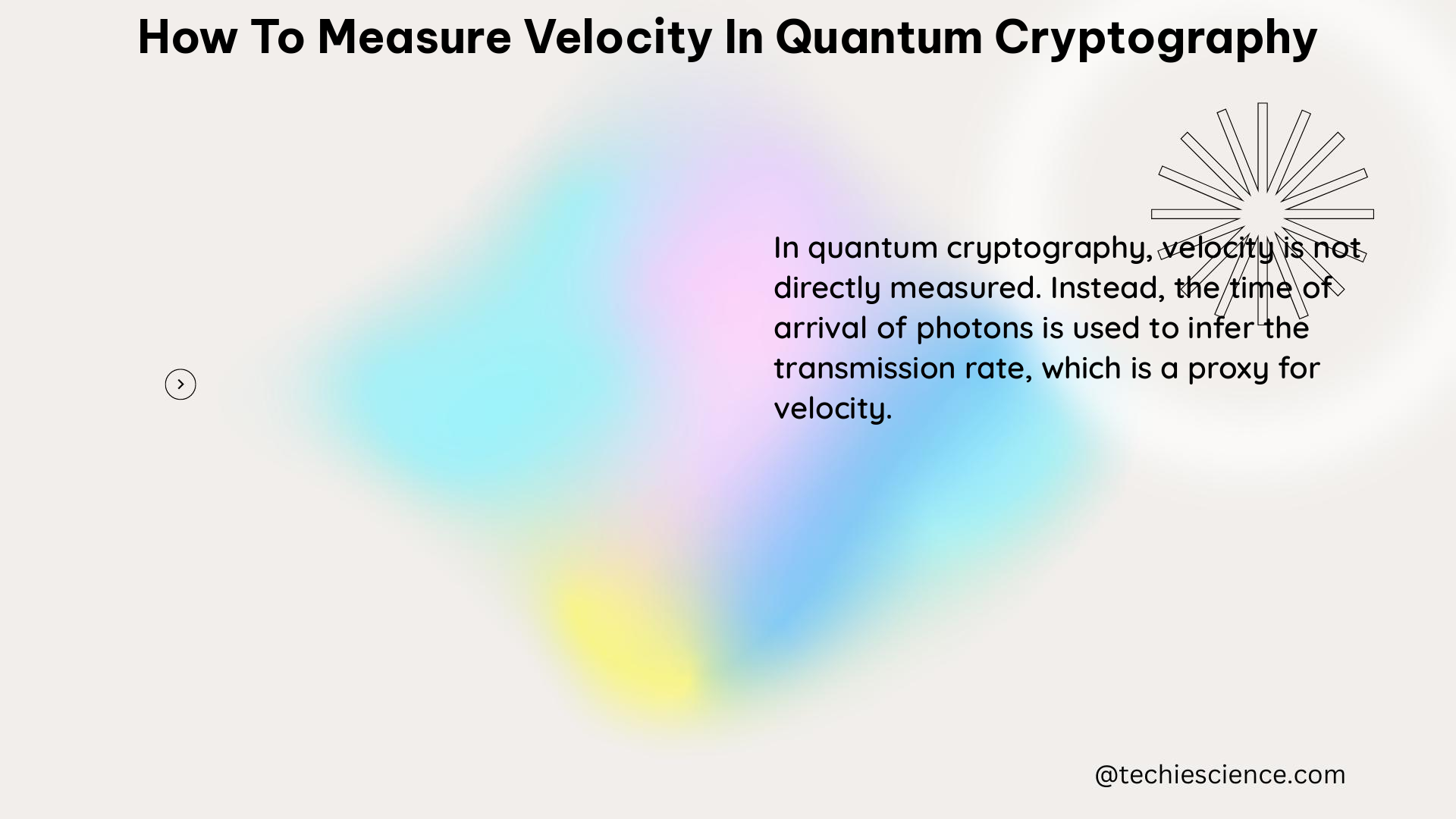In the realm of quantum cryptography, the concept of velocity is not directly measured, but rather, the focus is on the secure transmission of information using the principles of quantum mechanics. However, there are several related quantities that can be measured and analyzed to understand the performance and security of quantum cryptographic systems. This comprehensive guide will delve into the key parameters, theoretical explanations, technical specifications, numerical problems, and relevant figures to provide a thorough understanding of how to measure velocity in quantum cryptography.
Key Rate and Quantum Bit Error Rate (QBER)
The key rate is a crucial parameter in quantum cryptography, as it represents the number of secret bits that can be generated per use of the quantum channel. It is typically measured in bits per second (bps) or bits per pulse (bpp). The key rate depends on various factors, such as the transmission distance, the quantum bit error rate (QBER), and the efficiency of the error correction protocol.
The QBER is a measure of the error rate in the quantum transmission. It is calculated as the ratio of the number of erroneous bits to the total number of bits transmitted. The QBER is an essential parameter in quantum cryptography, as it provides a measure of the security of the transmission. A higher QBER indicates a higher probability of eavesdropping, which can compromise the security of the communication.
Theoretical Explanation: Quantum Key Distribution (QKD)

Quantum key distribution (QKD) protocols, such as BB84, utilize the principles of quantum mechanics to generate a secret key between two parties (Alice and Bob) who share a quantum channel. The security of QKD is based on the fact that any attempt to eavesdrop on the quantum channel will introduce errors that can be detected by Alice and Bob. This allows them to establish a secret key with a high level of confidence.
Technical Specifications of QKD Systems
A typical QKD system consists of a quantum transmitter (Alice), a quantum receiver (Bob), and a classical communication channel. The quantum transmitter generates quantum states, typically single photons, which are sent over the quantum channel to the quantum receiver. The quantum receiver then measures the quantum states and uses the measurement results to establish a secret key with Alice.
Measuring Key Rate and QBER
To measure the key rate and the QBER, Alice and Bob perform a series of measurements on the quantum states and compare their results over the classical communication channel. They can then calculate the key rate and the QBER based on the number of correct and erroneous bits.
Numerical Problem: Calculating Key Rate in BB84 with LDPC Codes
In the BB84 protocol with an error correction protocol based on low-density parity-check (LDPC) codes, the key rate can be calculated as:
key rate = 1 - h(QBER) - f(QBER) * h(QBER)
where h(x) is the binary entropy function and f(x) is the error correction efficiency.
Figures: Key Rate vs. Transmission Distance
Figure 1 shows the key rate as a function of the transmission distance for a specific QKD system. The graph illustrates the relationship between the key rate and the transmission distance, which is an important consideration in the design and deployment of quantum cryptographic systems.

Additional Concepts and Measurements
In addition to the key rate and QBER, there are other related concepts and measurements that are relevant in quantum cryptography:
-
Bit Error Rate (BER): The bit error rate is a measure of the error rate in classical communications. It is calculated as the ratio of the number of erroneous bits to the total number of bits transmitted. The BER is an important parameter in classical cryptography, as it provides a measure of the reliability of the communication.
-
Photon Detection Efficiency: The photon detection efficiency is a measure of the ability of the quantum receiver to detect the incoming photons. It is an important parameter in QKD systems, as it affects the overall key rate and the QBER.
-
Quantum Channel Transmittance: The quantum channel transmittance is a measure of the attenuation of the quantum signal as it propagates through the channel. It is an important parameter in determining the key rate and the QBER, as it affects the signal-to-noise ratio of the quantum transmission.
-
Coherence Time: The coherence time is a measure of the time over which the phase of a quantum state remains stable. It is an important parameter in certain QKD protocols, such as those based on continuous-variable encoding.
-
Quantum Decoherence: Quantum decoherence is the process by which the quantum state of a system becomes entangled with its environment, leading to the loss of the system’s quantum properties. This is an important consideration in the design and implementation of quantum cryptographic systems.
By understanding these key parameters, theoretical explanations, technical specifications, numerical problems, and relevant figures, you can gain a comprehensive understanding of how to measure velocity in quantum cryptography and the various factors that influence the performance and security of quantum cryptographic systems.
References
- Skaar, J., Lütkenhaus, N., & Leuchs, G. (2018). Advances in Quantum Cryptography. Advances in Optics and Photonics, 10(2), 380-439.
- Lo, H. K., Ma, X., & Chen, K. (2005). Efficient decoy-state quantum key distribution with quantified security. Physical Review Letters, 94(23), 230504.
- Bennett, C. H., & Brassard, G. (1984). Quantum cryptography: Public key distribution and coin tossing. In Proceedings of the IEEE International Conference on Computers, Systems and Signal Processing (pp. 175-179).

The lambdageeks.com Core SME Team is a group of experienced subject matter experts from diverse scientific and technical fields including Physics, Chemistry, Technology,Electronics & Electrical Engineering, Automotive, Mechanical Engineering. Our team collaborates to create high-quality, well-researched articles on a wide range of science and technology topics for the lambdageeks.com website.
All Our Senior SME are having more than 7 Years of experience in the respective fields . They are either Working Industry Professionals or assocaited With different Universities. Refer Our Authors Page to get to know About our Core SMEs.